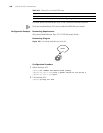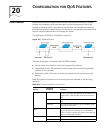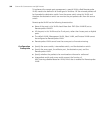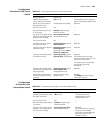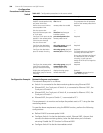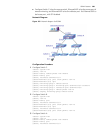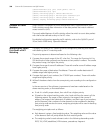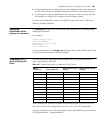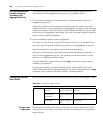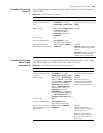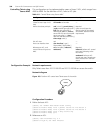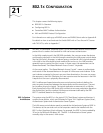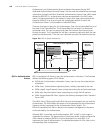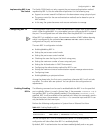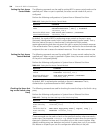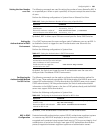
388 CHAPTER 20: CONFIGURATION FOR QOS FEATURES
The Synchronization
Feature of Queue
Scheduling for
Aggregation Ports
This feature provides the synchronization function of queue scheduling on each
individual port of the aggregation port group, as illustrated as follows:
1 The new feature supports the synchronization of queue scheduling within the
aggregation port group.
When users modify or delete the queue scheduling mode for a given port under
Ethernet port view, if the port belongs to an aggregation port group, then the queue
scheduling modes for all the other ports will be modified or deleted; if the port does
not belong to any aggregation port group, then only the queue scheduling mode for
this port will be modified or deleted.
2 Queue scheduling supports dynamic aggregation.
If the port is in the UP state, and the LACP feature of the port is also enabled, then
ports with the same queue scheduling information can be aggregated as a group.
Queue scheduling of ports supports static and manual aggregation.
Users can include those ports with their queue scheduling features configured in a
static or manual aggregation group. This operation can be done either on a local
device or in an XRN across various devices.
The new feature also supports the use of the copy command to copy the queue
scheduling configuration.
For more configurations on queue scheduling, refer to the QoS/ACL part of the
Switch 5500 Series Ethernet Operation Manual. For further information on the copy
command, refer to Switch 5500 Series Ethernet Operation Manual.
Configuring Control
Over Telnet
Table 408 describes the configuration specifications for control over logged in users.
Configuration
Preparation
Decide the control policy over Telnet, configuring the source IP, destination IP, and
source MAC to control over. Also specify whether the control action is permitting or
denying access.
Table 408 Control over logged in users
Login mode Control Method Implementation Relevant links
Telnet Control Telnet using
source IP
Implement by
means of basic ACL
1.9.2 Controlling Telnet using
Source IP
Control Telnet using
source IP and
destination IP
Implement by
means of advanced
ACL
1.9.3 Controlling Telnet using
Source IP and Destination IP
Control Telnet using
source MAC
Implement by
means of Layer 2
ACL
1.9.3 Controlling Telnet using
Source MAC



